Abstract
OBJECTIVE--To investigate the association between genital and urinary tract infections in pregnant Aboriginal women and low birth weight. DESIGN--Retrospective case-control study controlling for potential confounding variables. SETTING--Western Australia from 1985 to 1987. SUBJECTS--All Aboriginal women (n = 269) who had given birth to singleton infants weighing 2250 g or less (cases), and 269 randomly selected Aboriginal women who had given birth to singleton infants weighing 3000 g or more (controls). MAIN OUTCOME MEASURES--Proportions of women in case and control groups who had had genital and urinary tract infections; odds ratios for low birth weight when genitourinary tract infection was present; population attributable fraction of low birth weight to genitourinary tract infection. RESULTS--At the time of delivery 51% of women in the case group (109/215) had genitourinary tract infections compared with 13% of controls (35/266). After controlling for potential confounding variables the odds ratio for giving birth to infants weighing 2250 g or less when genitourinary tract infection was present was 4.0 (95% confidence interval 2.3 to 7.0). The proportion of infants with low birth weight attributable to genitourinary tract infection in the whole population of Aboriginal women was 32% (95% confidence interval 17% to 49%). CONCLUSIONS--There was a strong association between low birth weight and the presence of genitourinary tract infections in Aboriginal women both during pregnancy and at the time of delivery. A community intervention trial of screening and treatment of genitourinary infections in this population is recommended.
Full text
PDF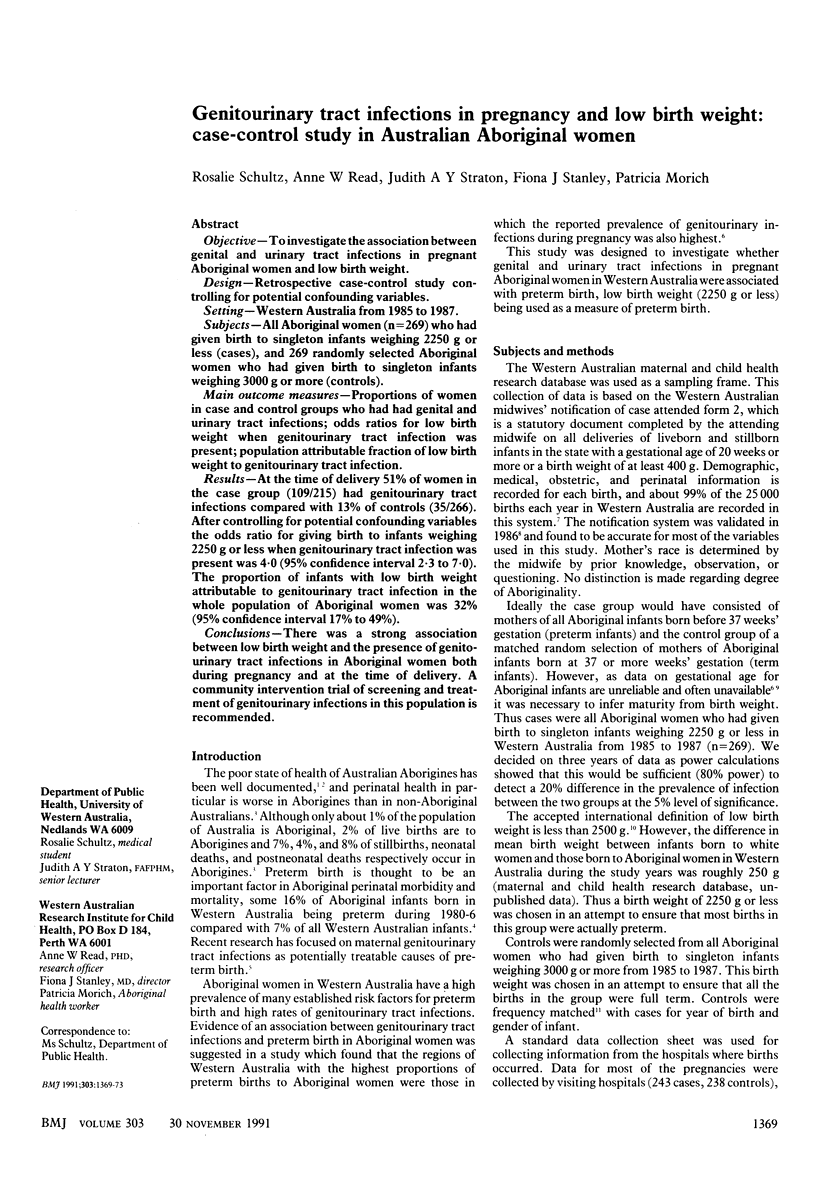
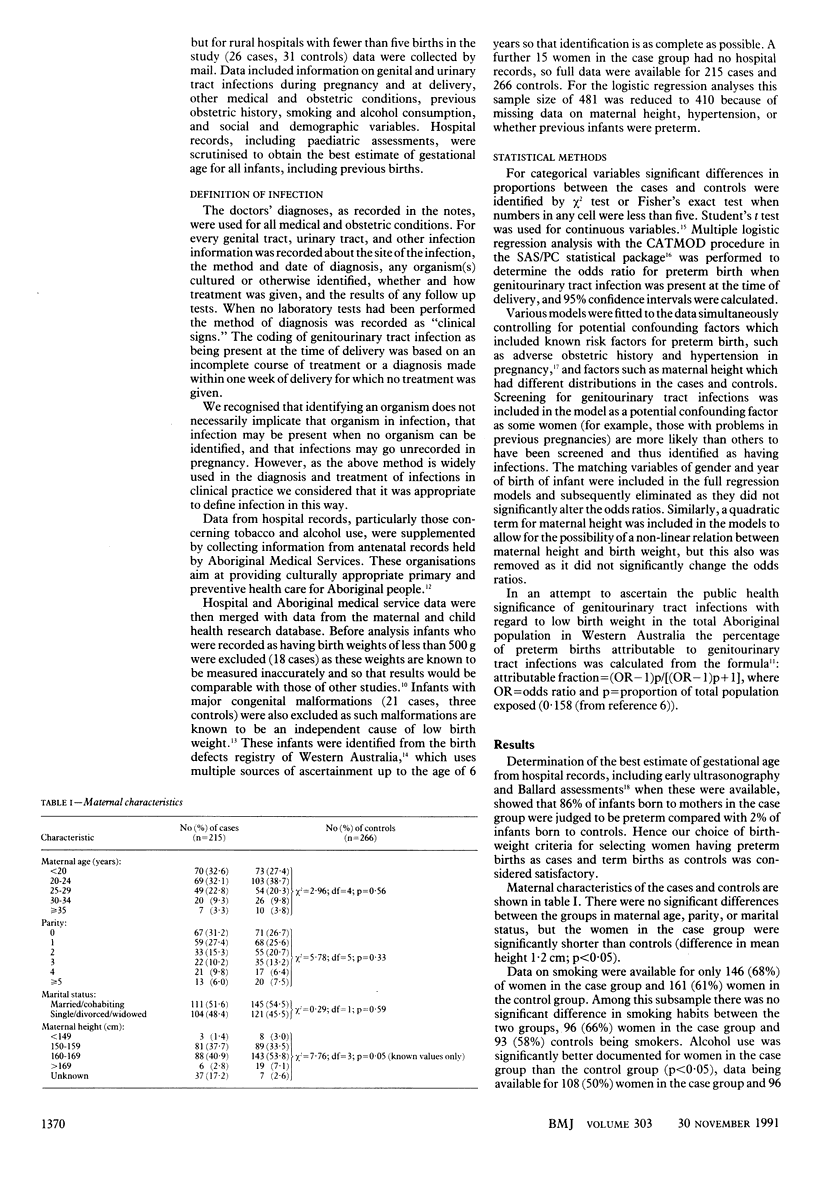
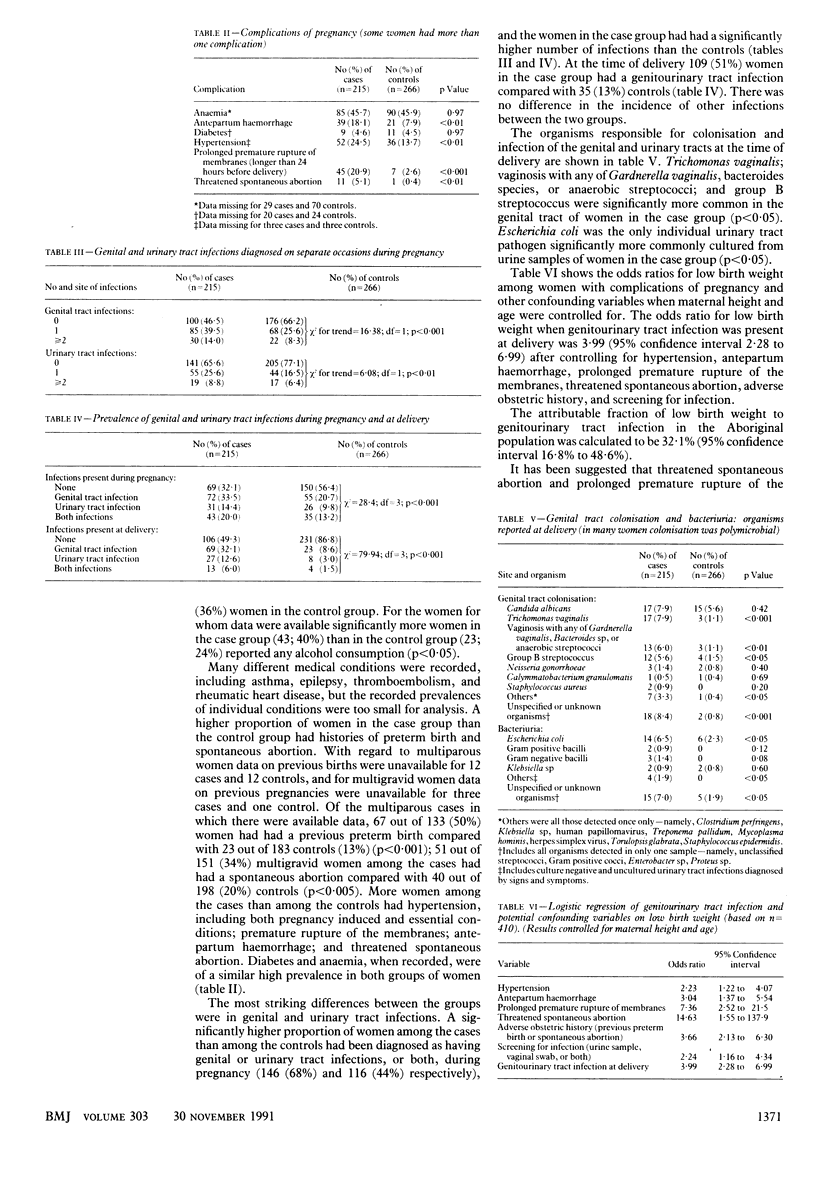
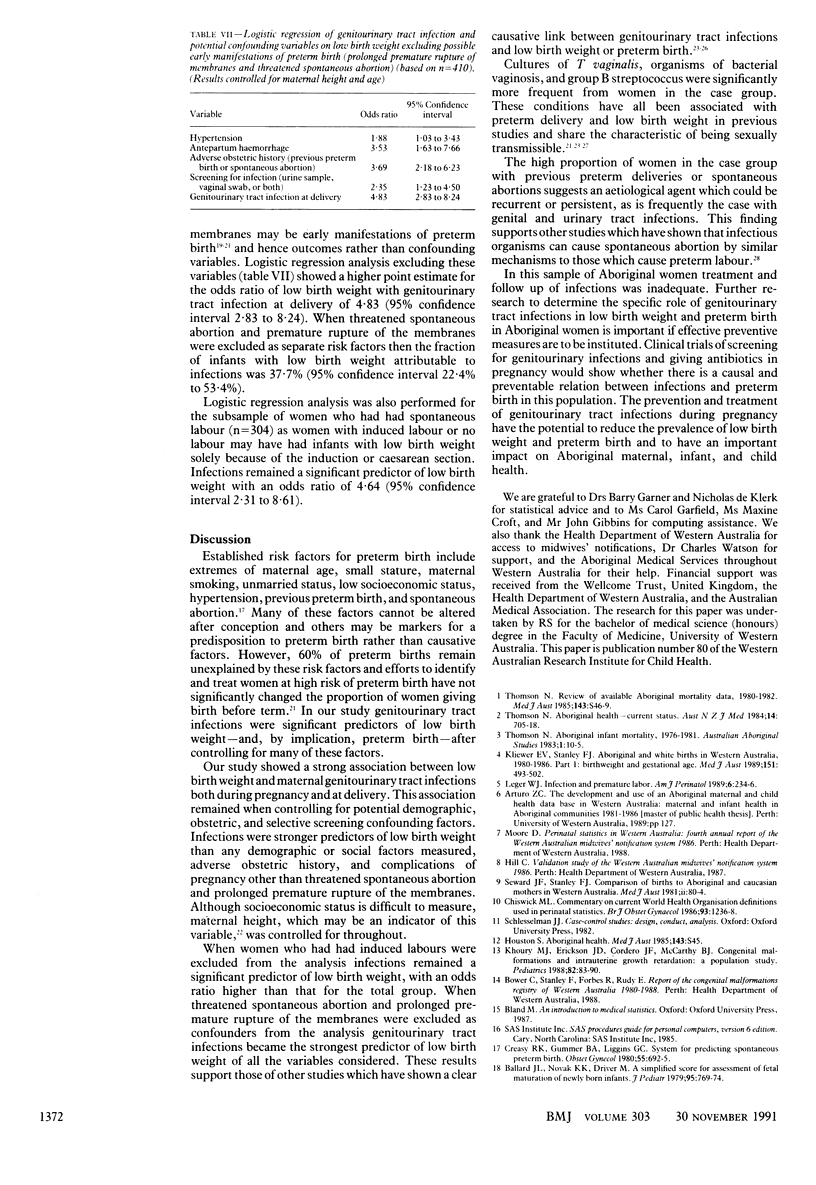
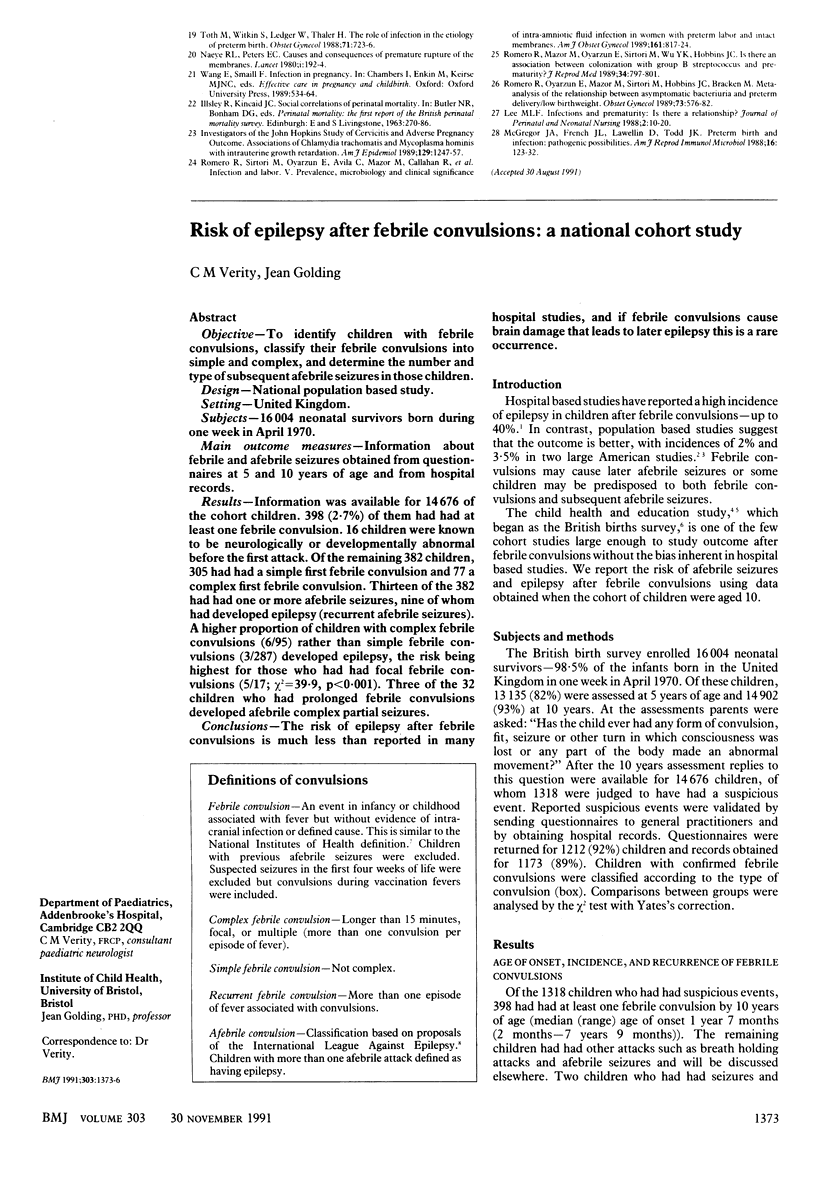
Selected References
These references are in PubMed. This may not be the complete list of references from this article.
- Ballard J. L., Novak K. K., Driver M. A simplified score for assessment of fetal maturation of newly born infants. J Pediatr. 1979 Nov;95(5 Pt 1):769–774. doi: 10.1016/s0022-3476(79)80734-9. [DOI] [PubMed] [Google Scholar]
- Chiswick M. L. Commentary on current World Health Organization definitions used in perinatal statistics. Br J Obstet Gynaecol. 1986 Dec;93(12):1236–1238. doi: 10.1111/j.1471-0528.1986.tb07857.x. [DOI] [PubMed] [Google Scholar]
- Creasy R. K., Gummer B. A., Liggins G. C. System for predicting spontaneous preterm birth. Obstet Gynecol. 1980 Jun;55(6):692–695. [PubMed] [Google Scholar]
- Houston S. Aboriginal health. Med J Aust. 1985 Oct 28;143(9 Suppl):S45–S45. [PubMed] [Google Scholar]
- Khoury M. J., Erickson J. D., Cordero J. F., McCarthy B. J. Congenital malformations and intrauterine growth retardation: a population study. Pediatrics. 1988 Jul;82(1):83–90. [PubMed] [Google Scholar]
- Kliewer E. V., Stanley F. J. Aboriginal and white births in Western Australia, 1980-1986. Part I: Birthweight and gestational age. Med J Aust. 1989 Nov 6;151(9):493–502. [PubMed] [Google Scholar]
- Ledger W. J. Infection and premature labor. Am J Perinatol. 1989 Apr;6(2):234–236. doi: 10.1055/s-2007-999583. [DOI] [PubMed] [Google Scholar]
- McGregor J. A., French J. I., Lawellin D., Todd J. K. Preterm birth and infection: pathogenic possibilities. Am J Reprod Immunol Microbiol. 1988 Mar;16(3):123–132. doi: 10.1111/j.1600-0897.1988.tb00181.x. [DOI] [PubMed] [Google Scholar]
- Naeye R. L., Peters E. C. Causes and consequences of premature rupture of fetal membranes. Lancet. 1980 Jan 26;1(8161):192–194. doi: 10.1016/s0140-6736(80)90674-1. [DOI] [PubMed] [Google Scholar]
- Romero R., Mazor M., Oyarzun E., Sirtori M., Wu Y. K., Hobbins J. C. Is there an association between colonization with group B Streptococcus and prematurity? J Reprod Med. 1989 Oct;34(10):797–801. [PubMed] [Google Scholar]
- Romero R., Oyarzun E., Mazor M., Sirtori M., Hobbins J. C., Bracken M. Meta-analysis of the relationship between asymptomatic bacteriuria and preterm delivery/low birth weight. Obstet Gynecol. 1989 Apr;73(4):576–582. [PubMed] [Google Scholar]
- Romero R., Sirtori M., Oyarzun E., Avila C., Mazor M., Callahan R., Sabo V., Athanassiadis A. P., Hobbins J. C. Infection and labor. V. Prevalence, microbiology, and clinical significance of intraamniotic infection in women with preterm labor and intact membranes. Am J Obstet Gynecol. 1989 Sep;161(3):817–824. doi: 10.1016/0002-9378(89)90409-2. [DOI] [PubMed] [Google Scholar]
- Thomson N. Aboriginal health--current status. Aust N Z J Med. 1984 Oct;14(5):705–718. doi: 10.1111/j.1445-5994.1984.tb05038.x. [DOI] [PubMed] [Google Scholar]
- Thomson N. Review of available Aboriginal mortality data, 1980-1982. Med J Aust. 1985 Oct 28;143(9 Suppl):S46–S49. [PubMed] [Google Scholar]
- Toth M., Witkin S. S., Ledger W., Thaler H. The role of infection in the etiology of preterm birth. Obstet Gynecol. 1988 May;71(5):723–726. [PubMed] [Google Scholar]


